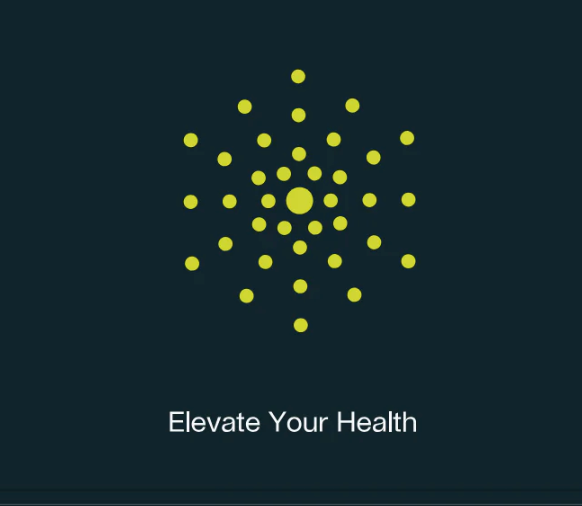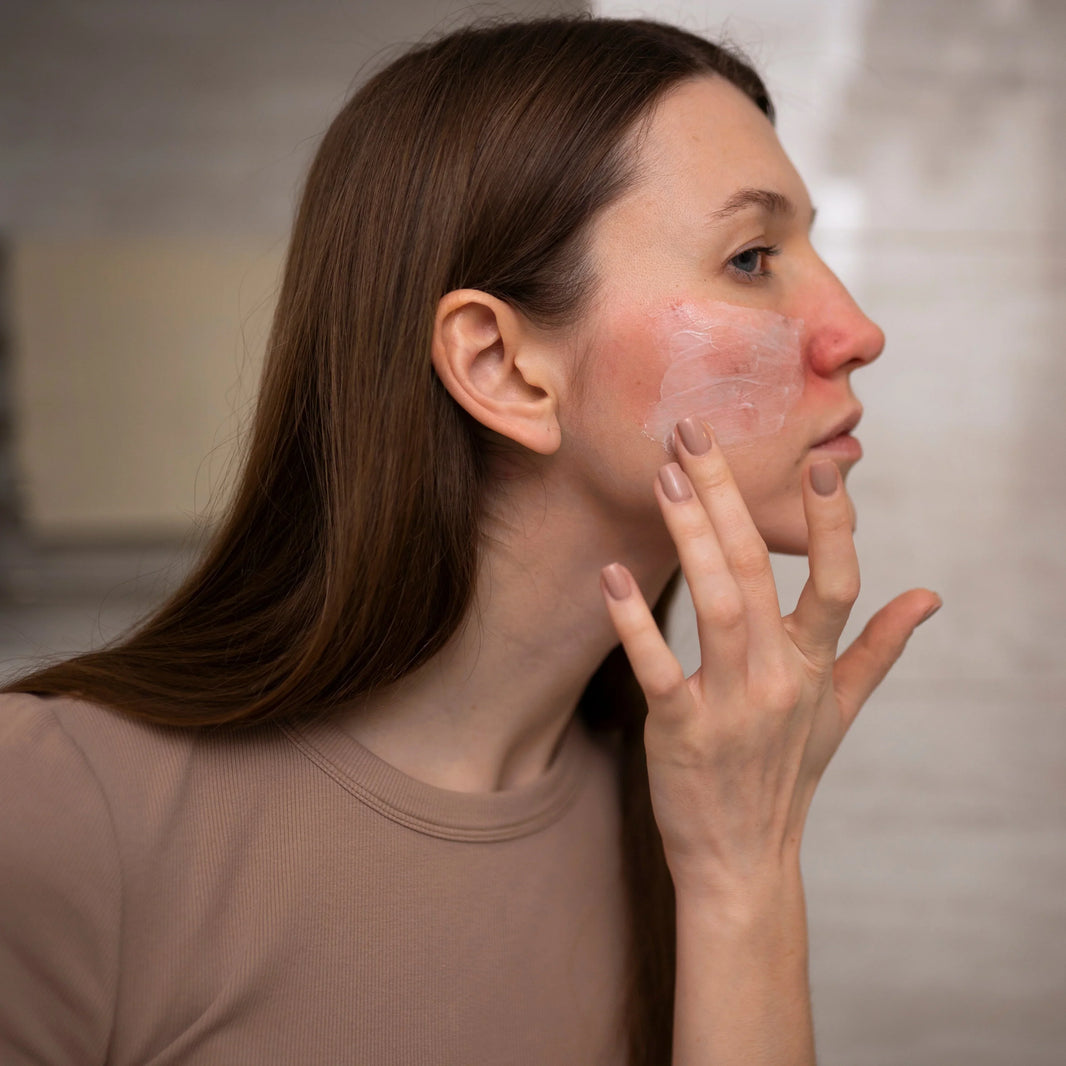Advanced liver detoxification encompasses a range of therapeutic approaches aimed at supporting liver function, reducing liver damage, and potentially reversing pathological changes in patients with liver diseases. The liver serves as the body's primary detoxification organ, metabolising endogenous and exogenous compounds through complex biochemical pathways. While "liver detox" has become a popular term in wellness circles, it's important to understand the scientific evidence behind various interventions that claim to enhance liver health. This comprehensive report examines the mechanisms of liver detoxification, evidence-based interventions, and approaches with limited scientific support.
Fundamental Mechanisms of Liver Detoxification
Physiological Detoxification Pathways
The liver possesses intricate detoxification systems designed to process and eliminate potentially harmful substances. These systems involve various molecular pathways and cellular components that work together to maintain liver health. Understanding these mechanisms is crucial for developing effective interventions for liver disease.
Mitochondria play essential roles in liver detoxification and regeneration. These cellular organelles coordinate energy production to support both the liver's metabolic demands and cellular proliferative processes during regeneration. Studies have demonstrated that mitochondrial dysfunction is associated with liver failure following resection, underscoring the importance of mitochondrial health in liver recovery. Emerging "mitotherapy" approaches involve transplanting healthy donor mitochondria into diseased organs to promote regeneration, representing a promising frontier in liver disease treatment16.
The AMPK-mediated autophagy pathway represents another critical mechanism in liver detoxification. Research on compounds like Aurantio-obtusin (AO) has shown that activation of the AMPK pathway significantly alleviates diet-induced hepatic steatosis in mice and lipid accumulation in hepatocytes. This compound works by promoting autophagy flux, influencing the degradation of lipid droplets through AMPK phosphorylation. Additionally, AMPK activation triggers TFEB (Transcription Factor EB) activation and promotes fatty acid oxidation by activating PPARα and ACOX1 while decreasing the expression of genes involved in lipid biosynthesis3.
Oxidative Stress and Antioxidant Defense Systems
Oxidative stress plays a central role in liver injury across various liver conditions. In the liver, reactive oxygen species (ROS) can damage cellular components and contribute to inflammation, fibrosis, and cell death. Consequently, antioxidant defense systems are vital for liver protection.
The Nrf2-mediated antioxidant signaling pathway represents one of the most important cellular defense mechanisms against oxidative stress in the liver. Research on butyrate-yielding dietary supplements has shown that they can prevent acute alcoholic liver injury by modulating this pathway. For example, butyrylated high-amylose maize starch (HAMSB) has been found to alleviate acute alcoholic liver disease in mice by reducing oxidative stress through regulation of Nrf2-mediated antioxidant signaling in the liver6.
Additionally, the gut-liver axis has emerged as a crucial component in liver health. The same study demonstrated that HAMSB improved the composition and function of intestinal microbiota, suggesting that liver detoxification strategies should consider gut health as an integral component6.
Evidence-Based Interventions for Liver Support
Dietary Compounds with Strong Evidence
Several dietary compounds have demonstrated efficacy in supporting liver health through well-established mechanisms. Among these, caffeine and its metabolites have shown promising results in recent research.
A nationwide cross-sectional study investigated the relationship between urinary caffeine metabolites and liver health. The research found that major caffeine metabolite mixtures and most individual caffeine metabolites were negatively associated with the risk of advanced liver fibrosis. This suggests that caffeine consumption may have protective effects against liver fibrosis progression. Interestingly, 7-methylxanthine (7-MX), a caffeine metabolite, consistently showed a negative association with liver steatosis across all analyses1.
Vitamin E has emerged as a significant intervention for non-alcoholic fatty liver disease (NAFLD), now recognized as metabolic dysfunction-associated steatotic liver disease (MASLD). A systematic review of clinical trials found that vitamin E supplementation significantly reduces serum aminotransferases (liver enzymes) and improves histological parameters such as steatosis and inflammation. These improvements in liver function markers suggest that vitamin E effectively reduces inflammation in patients with NAFLD/MASLD. However, the evidence regarding vitamin E's efficacy in enhancing fibrosis remains inconclusive, highlighting a gap in current research14.
Curcumin, a dietary supplement derived from turmeric, has shown considerable potential in preventing disease progression from NAFLD to hepatocellular carcinoma. A meta-analysis of studies involving animal models demonstrated that curcumin significantly improves key indicators across the stages of NAFLD, liver fibrosis, and hepatocellular carcinoma. Its primary mechanism appears to be the suppression of inflammatory markers like IL-1β, IL-6, and TNF-α. The hepatoprotective effects of curcumin were observed in dose ranges from 100 to 400 mg/kg and treatment durations from 4 to 10 weeks. Mechanistically, curcumin exerts its effects by modulating multiple signaling pathways involved in liver disease progression10.
Amino Acids and Specialized Nutritional Support
Branched-chain amino acids (BCAAs) have gained attention for their potential in managing advanced chronic liver disease. These essential amino acids (leucine, isoleucine, and valine) play crucial roles in protein synthesis and energy metabolism. In patients with advanced liver disease, BCAA supplementation has shown promise in addressing the nutritional deficiencies and complications associated with this condition2.
The relationship between low Fischer's ratio (the ratio of BCAAs to aromatic amino acids) and BCAA metabolism in advanced chronic liver disease highlights the potential benefit of BCAA supplementation. By improving this ratio, BCAAs may help ameliorate hepatic encephalopathy and other complications of advanced liver disease. Additionally, BCAAs may help address secondary sarcopenia, a common complication in patients with advanced liver disease that significantly impacts prognosis2.
Pharmaceutical Interventions with Proven Efficacy
Liraglutide, a glucagon-like peptide-1 (GLP-1) receptor agonist primarily used for type 2 diabetes, has shown promising effects in NAFLD treatment. Research indicates that liraglutide inhibits receptor for advanced glycation end products (RAGE)/reduced form of nicotinamide-adenine dinucleotide phosphate (NAPDH) signaling to ameliorate NAFLD. In high-fat diet-fed mice, liraglutide treatment improved bridging fibrosis and liver function while reducing reactive oxygen species levels and the expression of RAGE, NOX1, NOX2, and NOX4 proteins15.
At the cellular level, liraglutide treatment decreased cell apoptosis, ROS levels, and inflammatory factors including tumor necrosis factor-α, interleukin-1β, and interleukin-6. These effects were reversed when RAGE or NOX2 was overexpressed, confirming the mechanism of action. In liver stellate cells, liraglutide markedly suppressed cell proliferation and activation, further supporting its potential as a therapeutic agent for NAFLD15.
Emerging and Less Proven Approaches
Nutraceuticals with Preliminary Evidence
Several nutraceuticals have shown potential for supporting liver health, though the evidence remains preliminary. A review of nutraceuticals for MASLD/MASH treatment highlighted the potential role of vitamin C, beta-carotene, omega-3 fatty acids, and curcumin in preventing hepatic steatosis and inflammation, thereby potentially reducing the risk of organ fibrosis. These ingredients may help combat inflammation, reduce oxidative stress, and prevent liver damage when used alongside behavioral and pharmacological therapy9.
Traditional Chinese medicine has also been explored for liver support. For instance, an antialcoholism and liver detox Jiaosu was developed using traditional Chinese medicine components like pueraria lobata, hawthorn, and poria cocos. After bioenzymatic hydrolysis and fermentation with Lactobacillus rhamnosus, the resulting product showed increased levels of puerarin, flavonoids, amino acids, and polyphenols, as well as enhanced antioxidant capacity compared to the raw materials. However, while this approach shows promise, more rigorous clinical studies are needed to confirm its efficacy and safety4.
Advanced Delivery Systems
Novel delivery systems are being developed to enhance the bioavailability and efficacy of hepatoprotective compounds. Phytovesicular nanoconstructs represent an innovative approach to delivering medicinal plant metabolites with therapeutic potential. These systems integrate vesicular structures like liposomes, niosomes, transfersomes, and ethosomes to improve the absorption and stability of phytochemicals5.
These phytosome technologies offer diverse biological benefits, including hepatoprotective effects by enhancing liver detoxification and protection against toxins. Recent patented phytosome technologies have led to innovative formulations that improve the stability, bioavailability, and therapeutic efficacy of phytochemicals. However, commercialization challenges like manufacturing scalability and regulatory hurdles remain, indicating that these approaches, while promising, are not yet fully established in clinical practice5.
Bioengineering Approaches for Advanced Liver Disease
For cases of advanced liver disease where conventional treatments are insufficient, bioengineering approaches are being explored. Three-dimensional (3D) bioprinting has emerged as a promising tool with significant potential to fabricate volumetric liver tissue equivalents. This technology uses printable bioinks composed of hydrous microenvironments and formulations containing living cells and associated supplements12.
Decellularized matrices derived from mammalian tissues are being investigated as bioink substrates for liver tissue engineering. These matrices preserve the native extracellular matrix architecture and composition, potentially providing a more physiologically relevant environment for seeded cells. While this field is still in its early stages, it represents a frontier in liver disease treatment, particularly for patients with end-stage disease who might otherwise require organ transplantation12.
Vitamin D and Liver Health
Vitamin D has garnered attention for its potential role in liver disease management. Research has shown that patients with chronic liver disease, regardless of underlying etiology, typically have reduced vitamin D levels. There is also evidence suggesting that vitamin D values may have a predictive role in complications and progression of advanced liver disease8.
The pathophysiological mechanisms underlying vitamin D deficiency in patients with chronic liver disease are complex and vary across different liver etiologies. In patients with advanced chronic liver disease (cirrhosis), vitamin D deficiency may contribute to or exacerbate related complications. However, specific indications for vitamin D supplementation in liver disease remain inconclusive beyond what is already recommended for the general population. Future research should focus on validating the role of vitamin D supplementation specifically for chronic liver disease patients8.
Conclusion
Advanced liver detoxification encompasses multiple physiological pathways and potential therapeutic interventions. The most well-established mechanisms include mitochondrial function, AMPK-mediated autophagy, Nrf2 antioxidant signaling, and modulation of inflammatory pathways. Evidence-based interventions with demonstrated efficacy include vitamin E for NAFLD/MASLD, curcumin for liver inflammation and fibrosis, branched-chain amino acids for nutritional support in advanced liver disease, and pharmaceutical agents like liraglutide that target specific pathological pathways.
While some approaches show promise, many "liver detox" products and protocols lack robust scientific evidence. Traditional herbal formulations, phytovesicular nanoconstructs, and certain nutraceuticals require further investigation to establish their efficacy and safety profiles. Additionally, the gut-liver axis represents an important consideration in liver health, with emerging evidence supporting the role of microbiota-targeted interventions.
For patients with liver disease, the most proven approach to supporting liver health combines evidence-based interventions with lifestyle modifications under medical supervision. Future research should focus on personalizing liver support strategies based on disease etiology, stage, and individual patient factors to optimize outcomes in liver disease management.
Citations:
- https://pubmed.ncbi.nlm.nih.gov/38295369/
- https://www.ncbi.nlm.nih.gov/pmc/articles/PMC10574343/
- https://www.ncbi.nlm.nih.gov/pmc/articles/PMC8787202/
- https://www.semanticscholar.org/paper/c09e2dc1944c2605c3bdb7042a3a5260bc0601a6
- https://pubmed.ncbi.nlm.nih.gov/39171597/
- https://www.ncbi.nlm.nih.gov/pmc/articles/PMC11395132/
- https://www.ncbi.nlm.nih.gov/pmc/articles/PMC11449526/
- https://www.ncbi.nlm.nih.gov/pmc/articles/PMC9409132/
- https://www.ncbi.nlm.nih.gov/pmc/articles/PMC11120776/
- https://www.ncbi.nlm.nih.gov/pmc/articles/PMC10834658/
- https://pubmed.ncbi.nlm.nih.gov/36173828/
- https://www.ncbi.nlm.nih.gov/pmc/articles/PMC10236352/
- https://pubmed.ncbi.nlm.nih.gov/26553870/
- https://www.ncbi.nlm.nih.gov/pmc/articles/PMC11602675/
- https://www.ncbi.nlm.nih.gov/pmc/articles/PMC8974036/
- https://pubmed.ncbi.nlm.nih.gov/36648139/
- https://www.ncbi.nlm.nih.gov/pmc/articles/PMC7132021/
- https://www.ncbi.nlm.nih.gov/pmc/articles/PMC5468341/
- https://pubmed.ncbi.nlm.nih.gov/30286621/
- https://pubmed.ncbi.nlm.nih.gov/34932136/
- https://www.ncbi.nlm.nih.gov/pmc/articles/PMC8848434/
- https://pubmed.ncbi.nlm.nih.gov/31989700/
- https://www.ncbi.nlm.nih.gov/pmc/articles/PMC10003078/
- https://www.ncbi.nlm.nih.gov/pmc/articles/PMC10226011/
- https://pubmed.ncbi.nlm.nih.gov/38591973/
- https://pubmed.ncbi.nlm.nih.gov/34482352/
- https://www.ncbi.nlm.nih.gov/pmc/articles/PMC9376100/
- https://www.semanticscholar.org/paper/32356d9a2e4da08845fbf8a923bcc2b768915d92
- https://pubmed.ncbi.nlm.nih.gov/37073867/
- https://www.semanticscholar.org/paper/20a5383b270c5f65ac1a6cb95a07034485c828d3
- https://pubmed.ncbi.nlm.nih.gov/38362886/
- https://pubmed.ncbi.nlm.nih.gov/38680105/
- https://www.ncbi.nlm.nih.gov/pmc/articles/PMC11414117/
- https://www.ncbi.nlm.nih.gov/pmc/articles/PMC9958770/
- https://pubmed.ncbi.nlm.nih.gov/38652028/
- https://www.semanticscholar.org/paper/95c9c91283309a009409c522dcd8ee71142e5072
- https://pubmed.ncbi.nlm.nih.gov/37468229/
- https://pubmed.ncbi.nlm.nih.gov/31907774/
- https://www.ncbi.nlm.nih.gov/pmc/articles/PMC9780118/
- https://www.ncbi.nlm.nih.gov/pmc/articles/PMC9904436/
- https://www.ncbi.nlm.nih.gov/pmc/articles/PMC7284598/
- https://pubmed.ncbi.nlm.nih.gov/39072822/
- https://pubmed.ncbi.nlm.nih.gov/37244150/
- https://www.ncbi.nlm.nih.gov/pmc/articles/PMC11139849/
- https://www.ncbi.nlm.nih.gov/pmc/articles/PMC6947946/
- https://www.semanticscholar.org/paper/e23ddfd7500179c747a2702e038e072d685d26ea
- https://pubmed.ncbi.nlm.nih.gov/35543857/
- https://www.ncbi.nlm.nih.gov/pmc/articles/PMC11507192/
- https://pubmed.ncbi.nlm.nih.gov/34028092/
- https://pubmed.ncbi.nlm.nih.gov/36915990/
- https://www.ncbi.nlm.nih.gov/pmc/articles/PMC5674495/
- https://pubmed.ncbi.nlm.nih.gov/38213249/
- https://www.semanticscholar.org/paper/0cb6fc9a7823ba526edc4790553d798c60db26e5
- https://pubmed.ncbi.nlm.nih.gov/4028913/
- https://www.ncbi.nlm.nih.gov/pmc/articles/PMC10620839/
- https://pubmed.ncbi.nlm.nih.gov/39927926/
- https://www.ncbi.nlm.nih.gov/pmc/articles/PMC8537188/
- https://www.ncbi.nlm.nih.gov/pmc/articles/PMC11324258/
- https://www.semanticscholar.org/paper/d59c8cc9499d20796447200d8e37652488151780
- https://www.ncbi.nlm.nih.gov/pmc/articles/PMC5713432/
- https://www.ncbi.nlm.nih.gov/pmc/articles/PMC6834322/
- https://www.semanticscholar.org/paper/ff014a9a61491269b1580954a896bcdbf505fbfb
- https://www.ncbi.nlm.nih.gov/pmc/articles/PMC11802444/
- https://www.ncbi.nlm.nih.gov/pmc/articles/PMC10871888/
- https://www.semanticscholar.org/paper/366d5bbb0a1208ef01610dc6efbf19db7b79cd50
- https://www.ncbi.nlm.nih.gov/pmc/articles/PMC10714452/
- https://www.ncbi.nlm.nih.gov/pmc/articles/PMC9044975/








